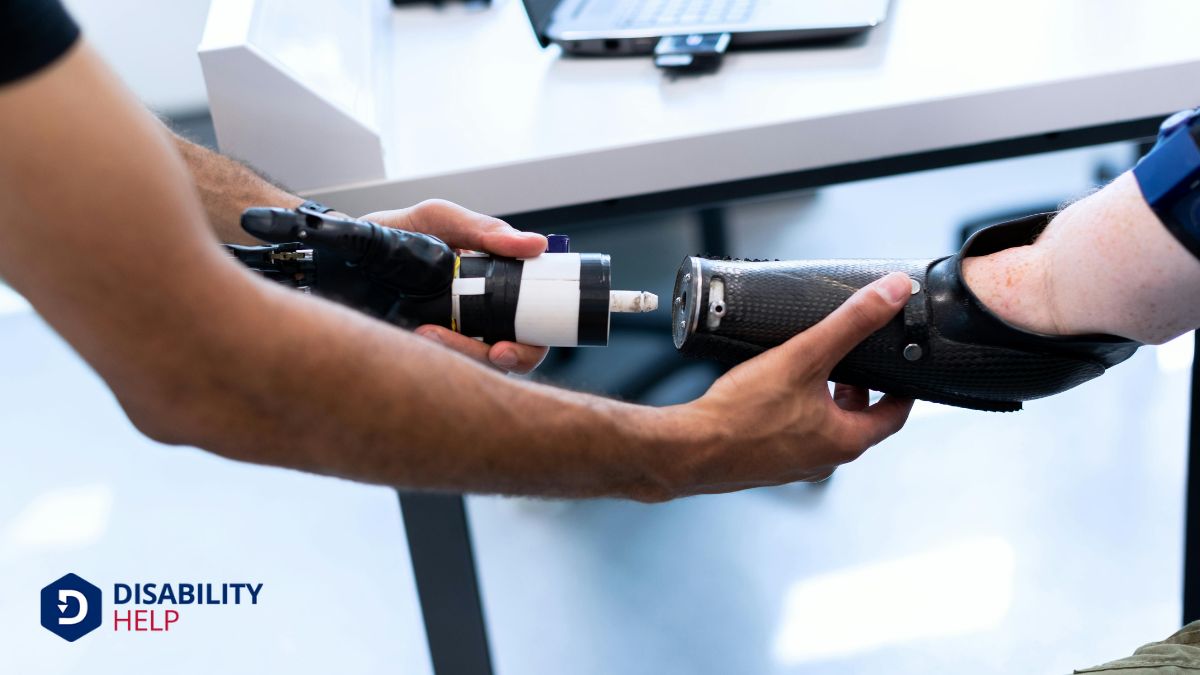To prove VA disability, we need to gather thorough medical evidence that establishes clear connections between our condition and military service. This involves collecting up-to-date medical records, obtaining detailed provider statements, and organizing service treatment records (STRs) alongside military documents. Crafting a compelling personal statement that vividly illustrates how our disability impacts daily life can also strengthen our case. Moving through the claims process with a deep understanding of VA's criteria and engaging with VA-accredited professionals can greatly improve our chances of success. Let's explore how to effectively compile and present our evidence.
Key Takeaways
- Establish a direct nexus between your military service and current medical condition using detailed medical and service records.
- Obtain comprehensive and up-to-date medical records, including treatment notes, examinations, and healthcare provider statements.
- Document the service connection thoroughly with service treatment records, buddy statements, or a qualified medical professional's connection letter.
- Craft a persuasive personal statement detailing the impact of your service-related conditions on daily life with specific examples.
- Understand the VA's disability evaluation criteria and gather tailored evidence meeting the specific requirements for a strong claim.
Understanding VA Disability Criteria
Understanding the complexities of VA disability criteria can feel overwhelming, but grasping them is essential for veterans seeking benefits. As we navigate this process together, it's pivotal to understand how the VA determines eligibility.
The VA evaluates disabilities based on their connection to military service while considering the impact on our daily functioning. We must establish a direct link between our service and the disability we're claiming. This link, known as the "nexus," is fundamental in proving our case.
We also need to familiarize ourselves with the VA's rating system, which measures the severity of our condition. It ranges from 0% to 100% in 10% increments, reflecting how much our disability affects our ability to work and perform daily activities. Understanding how this rating impacts our benefits is crucial.
Furthermore, we should be aware of secondary disabilities, which are conditions that stem from a service-connected disability. Recognizing and documenting these can strengthen our claim.
Throughout this process, it's important to stay organized and proactive, ensuring that we thoroughly understand the criteria. This knowledge empowers us to prepare a well-supported claim, which is pivotal for securing the benefits we deserve.
Gathering Medical Evidence

When proving our VA disability claim, gathering medical evidence is a vital step. We must confirm our medical records are thorough and up-to-date to support our case. Start by collecting all relevant medical documents, including hospital records, treatment notes, and diagnostic test results. These records should clearly outline our medical conditions and the treatments we've received.
It's important to obtain statements from our healthcare providers that detail the severity of our conditions and how they impact our daily lives. These statements can add considerable weight to our claim, offering professional insights into our disabilities.
We should also consider including any results from specialized examinations that relate specifically to our conditions.
If we've seen multiple healthcare providers, make sure to gather records from all of them. Consistency across these documents is crucial, as discrepancies might raise questions during the review process.
Additionally, let's not forget to include any prescriptions or therapy plans that illustrate ongoing treatment.
Organizing this evidence systematically will make it easier for the VA to review. A well-prepared medical evidence package can notably strengthen our claim, helping us move closer to receiving the benefits we deserve.
Documenting Service Connection
How can we effectively document the service connection in our VA disability claim? It's essential to establish a direct link between our current medical condition and our military service.
Let's begin by ensuring we have a detailed service treatment record (STR). This record should detail any injuries, symptoms, or medical conditions we experienced during our time in service. If our STR isn't complete, we might need to gather buddy statements from fellow service members who can attest to our condition or incident.
Next, we should focus on obtaining a connection letter from a qualified medical professional. This letter acts as a bridge, connecting our current disability to our military service. The doctor should explain how our condition is "at least as likely as not" related to our service. It's important that the medical professional provides a clear rationale for their conclusion.
Don't forget to include any official military documents that can support our case, such as incident reports or commendations. These can provide additional context and evidence of in-service events or exposures. By carefully compiling and organizing these documents, we strengthen our claim and enhance our chances of a successful outcome.
Crafting a Personal Statement
To effectively craft a personal statement for our VA disability claim, we must focus on telling our story with clarity and impact. Our goal is to paint a vivid picture of how our service-related conditions affect our daily lives. We need to be honest and specific in detailing our experiences, ensuring that we highlight the severity and persistence of our symptoms. Using concrete examples provides a deeper understanding of our situation.
Let's start by organizing our thoughts. We should outline the main points we want to convey, focusing on incidents or symptoms directly related to our service. Describing significant events or changes in our health can help the VA see the connection between our service and our current condition.
We'll want to be thorough yet concise, avoiding unnecessary details that might dilute our message.
Navigating the Claims Process

As we commence navigating the claims process, understanding the eligibility criteria is our first step.
We need to guarantee we gather all the essential documentation to support our claim effectively.
Understanding Eligibility Criteria
Traversing the VA disability claims process can feel like mapping a course through a complex maze, but understanding the eligibility criteria is our first step toward clarity. Let's break it down together.
First, we need to confirm our status as veterans. This means having served on active duty, active duty for training, or inactive duty training. Discharges need to be under conditions other than dishonorable.
Next, we need a current medical condition, either physical or mental, that affects our ability to function. The condition must be linked to our military service—this is where things often get tricky. Our condition could have started during active duty, been aggravated by service, or been a secondary condition to an existing service-connected disability.
Lastly, the VA requires a nexus, or connection, between our military service and the current condition. Establishing this link is essential and can sometimes demand medical opinions or evidence that ties our symptoms directly to our time in service.
Gathering Essential Documentation
When starting on the VA disability claims journey, gathering necessary documentation is key to building a strong case. Together, we'll focus on collecting the required records that clearly demonstrate the connection between military service and your current condition.
First, let's make sure we've our service records. These documents verify our service history and any incidents that may have contributed to our disability. It's important to include details like dates, assignments, and any specific events impacting our health.
Next, medical records come into play. We need to gather all relevant medical documentation from both military and civilian providers. These records should include diagnoses, treatments, and any pertinent tests or evaluations that support our claim. If we've been to any VA medical centers, obtaining these records is equally essential.
Additionally, personal statements and lay statements from family or fellow service members can provide context and firsthand accounts of how our condition affects daily life. These narratives can strengthen our case by offering perspectives outside of clinical settings.
Strengthening Your Case

Successfully strengthening your VA disability case often requires thorough preparation and strategic action. We need to verify our evidence is compelling and clearly presents the reality of our situation. To start, let's organize our documents meticulously.
Chronological order can help create a coherent narrative that connects our service history with our current medical condition. This clarity can make a significant difference when our claim is reviewed.
Next, consider seeking statements from those who know our situation best—family members, coworkers, or fellow service members. Their testimonies can offer valuable insights into how our disability affects daily life. These personal stories, paired with medical records, provide a fuller picture of our challenges.
We should also stay informed about the VA's criteria and regulations. Understanding how the VA evaluates claims helps us tailor our evidence to meet those specific requirements. If possible, consulting a VA-accredited representative or attorney can be an invaluable step. They can guide us through complex procedures and help us avoid common pitfalls.
Conclusion
To summarize, we've examined the crucial steps to establish VA disability. By grasping the criteria, collecting strong medical evidence, and recording service connections, we establish a solid foundation. Crafting a personal statement and maneuvering through the claims process with caution can make all the difference. Remember, we're in this united effort, and each element fortifies our case. Let's guarantee we present a thorough claim, maximizing our chances for a favorable result. Stay persistent and proactive—your efforts count.
The post How to Prove VA Disability? appeared first on Resources on Disability Assistance: Your Rights and Benefits.
source https://www.disabilityhelp.org/how-to-prove-va-disability/
No comments:
Post a Comment